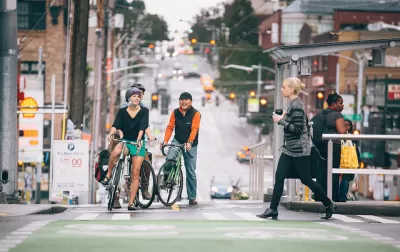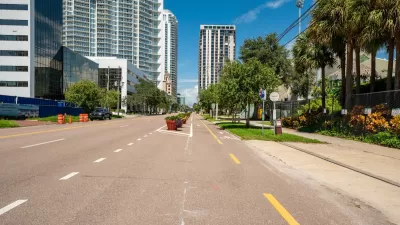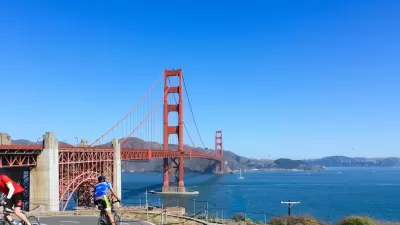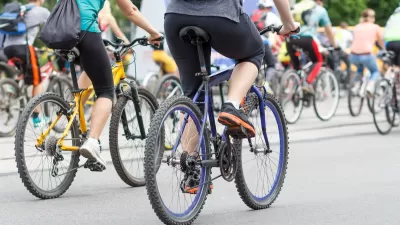Data from cities across the country show that bike helmet laws are enforced more aggressively in communities of color.

After body camera footage showing officers mocking and ultimately ticketing a bicyclist who was injured by a hit-and-run driver in Seattle surfaced, bike and pedestrian advocates in the city are calling for a reckoning with the unintended consequences of Seattle's bike helmet law. Since 2017, 43% of the city's helmet citations "have gone to people who are homeless," prompting questions about the law's uneven application, writes Adina Solomon in The Guardian.
Seattle isn't the only city where data shows bike helmet laws get unequally and unfairly applied:
"Black cyclists are disproportionately stopped in New Orleans, Washington DC and Oakland, California, and law enforcement policies have often overlooked inequity in their system. In Dallas, police have used helmet laws to stop and question cyclists in neighbourhoods of colour, according to a 2014 analysis by the Dallas Morning News. And a 2016 study by the Department of Justice found that Black people accounted for 73% of bicycle stops in Tampa, Florida, while only making up 26% of the population."
According to Charles T. Brown, CEO of urban planning firm Equitable Cities and adjunct professor of planning and public policy at Rutgers University, the laws are "being used as a pretext to stop individuals suspected of more serious drug and weapon charges." Tiffani McCoy, advocacy director for Real Change, agrees. "This is one law that we now know for certain is used as a way to criminalize poverty and in a racially motivated way," she says.
"But there are measures beyond helmet laws and policing that can help ensure the safety of all cyclists," writes Solomon. Since Seattle lowered vehicle speed limits to 25mph on many of its streets in December 2019, case studies show a 20% to 40% drop in collisions, and advocates believe that other measures such as "proper lighting for nighttime riding, protected bike lanes and recreational trail networks that connect to key destinations" can have a meaningful impact on reducing crashes and improving safety for people on bikes. "Before there is law, there should be investment and bicycle infrastructure in the communities that need the investments the most," said Brown.
FULL STORY: How US helmet laws are used against cyclists of colour and homeless people

Alabama: Trump Terminates Settlements for Black Communities Harmed By Raw Sewage
Trump deemed the landmark civil rights agreement “illegal DEI and environmental justice policy.”

Planetizen Federal Action Tracker
A weekly monitor of how Trump’s orders and actions are impacting planners and planning in America.

Why Should We Subsidize Public Transportation?
Many public transit agencies face financial stress due to rising costs, declining fare revenue, and declining subsidies. Transit advocates must provide a strong business case for increasing public transit funding.

Understanding Road Diets
An explainer from Momentum highlights the advantages of reducing vehicle lanes in favor of more bike, transit, and pedestrian infrastructure.

New California Law Regulates Warehouse Pollution
A new law tightens building and emissions regulations for large distribution warehouses to mitigate air pollution and traffic in surrounding communities.

Phoenix Announces Opening Date for Light Rail Extension
The South Central extension will connect South Phoenix to downtown and other major hubs starting on June 7.
Urban Design for Planners 1: Software Tools
This six-course series explores essential urban design concepts using open source software and equips planners with the tools they need to participate fully in the urban design process.
Planning for Universal Design
Learn the tools for implementing Universal Design in planning regulations.
Caltrans
Smith Gee Studio
Institute for Housing and Urban Development Studies (IHS)
City of Grandview
Harvard GSD Executive Education
Toledo-Lucas County Plan Commissions
Salt Lake City
NYU Wagner Graduate School of Public Service





























